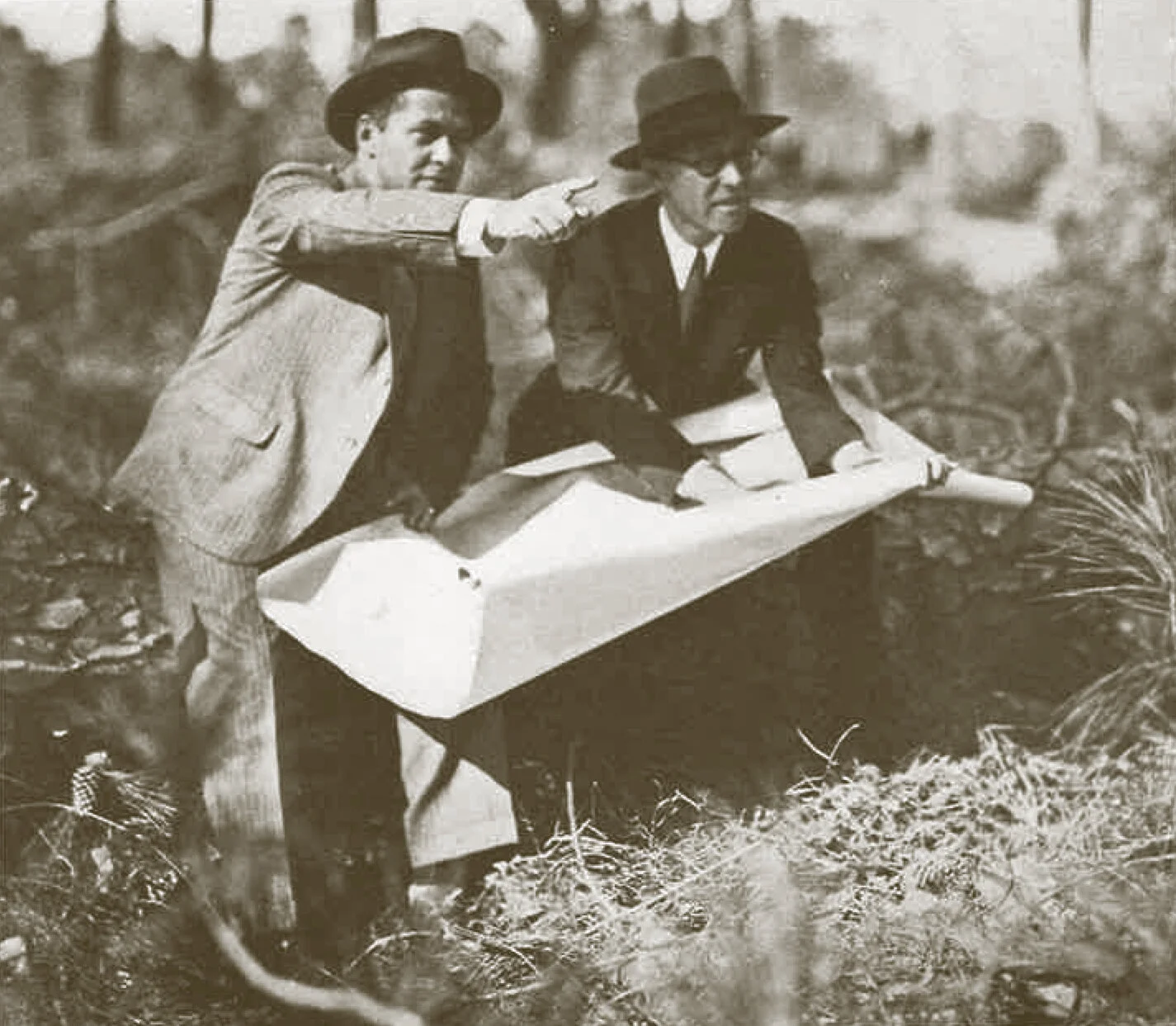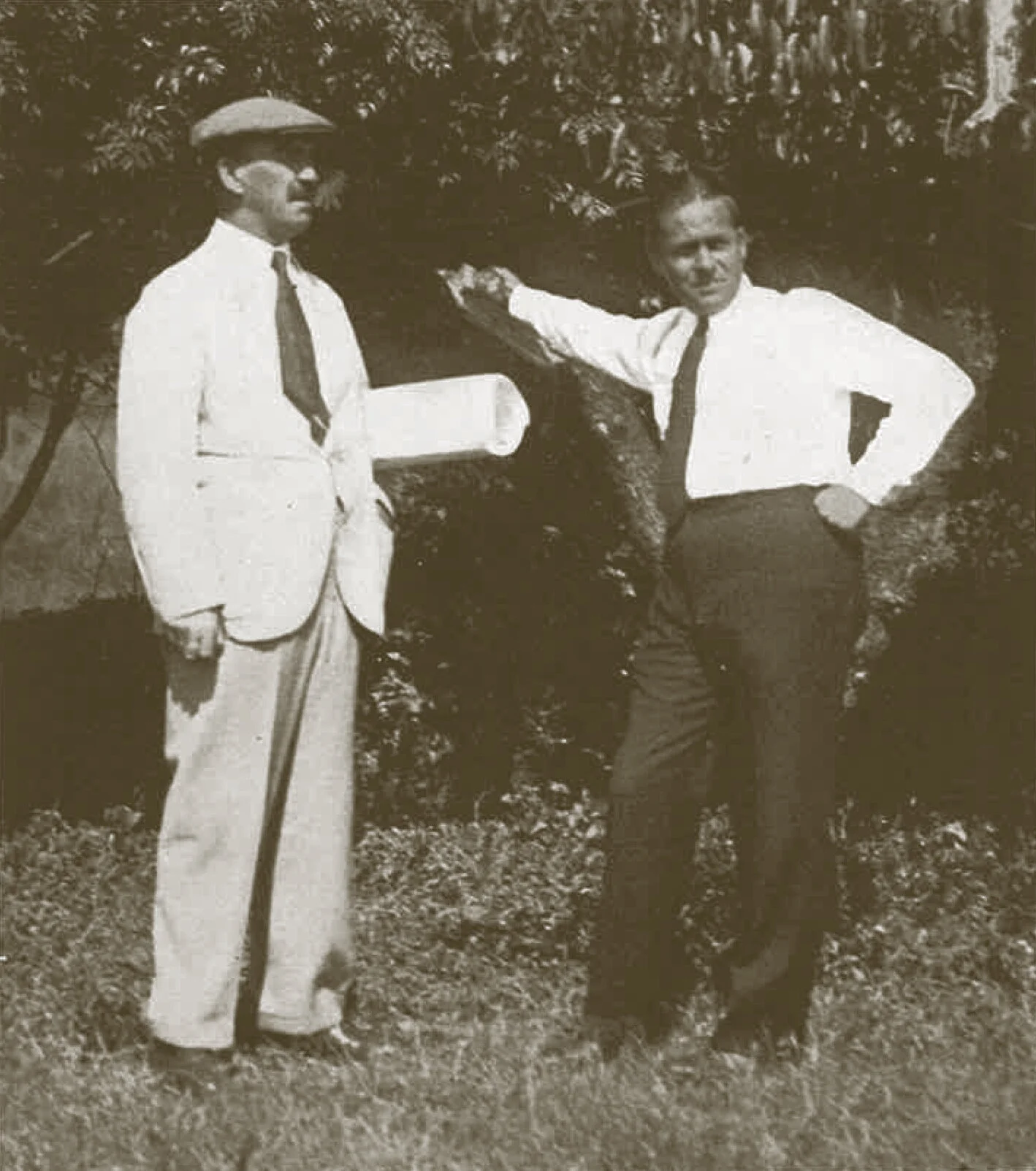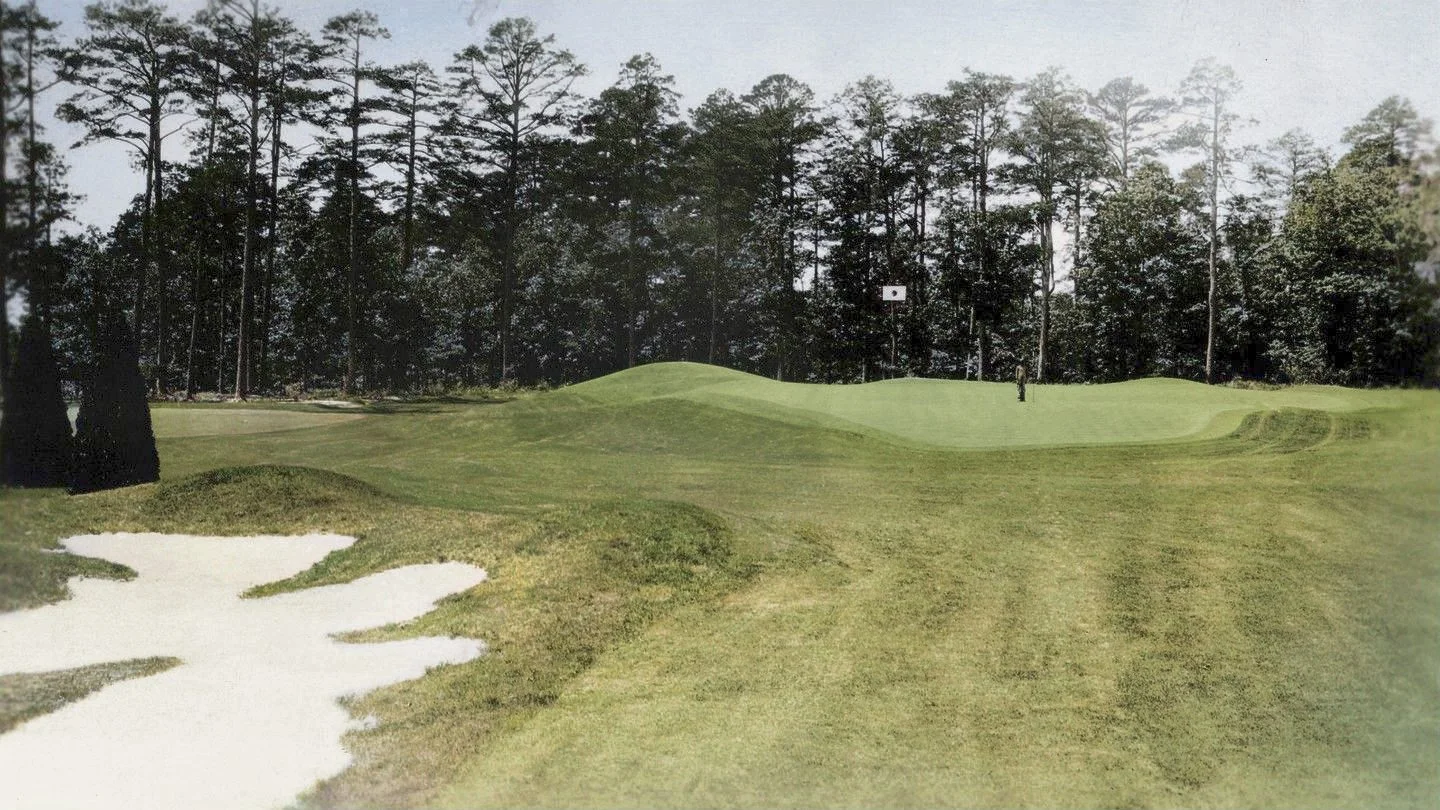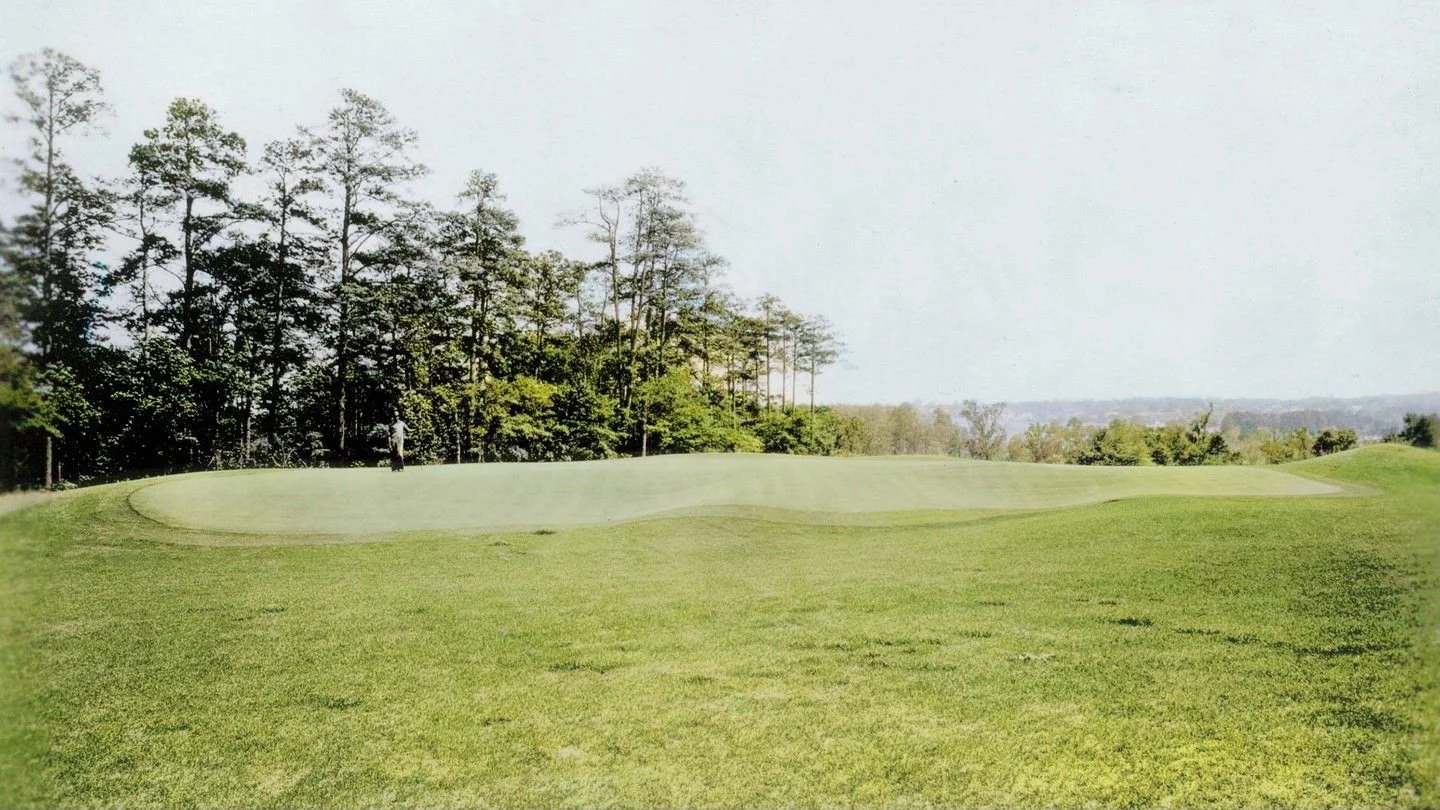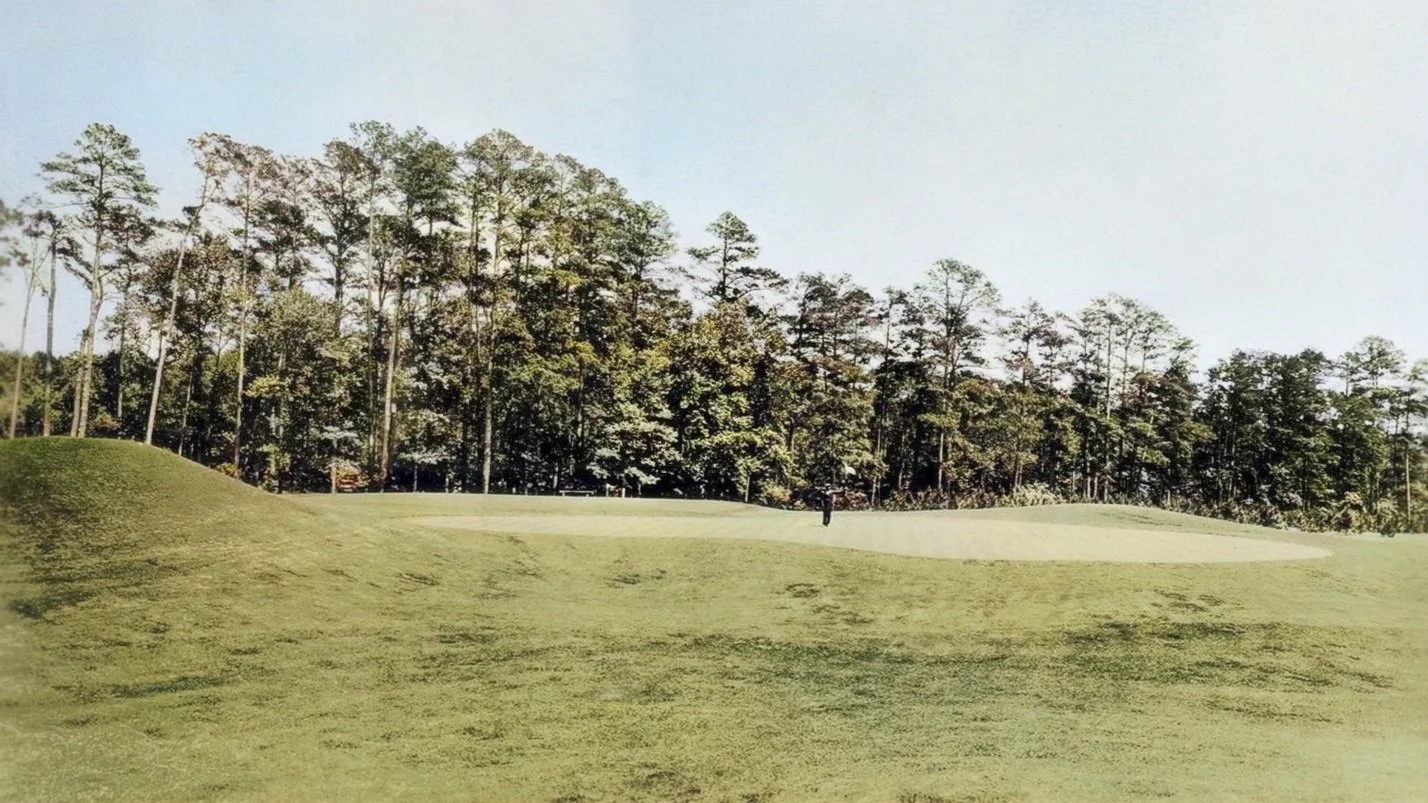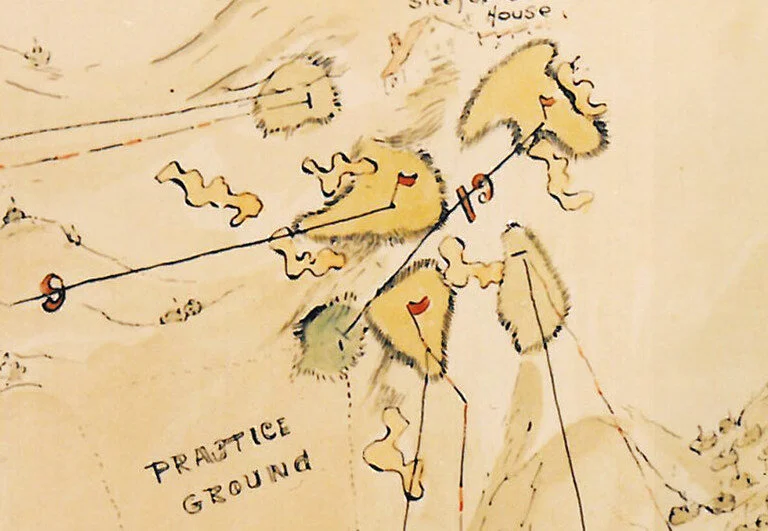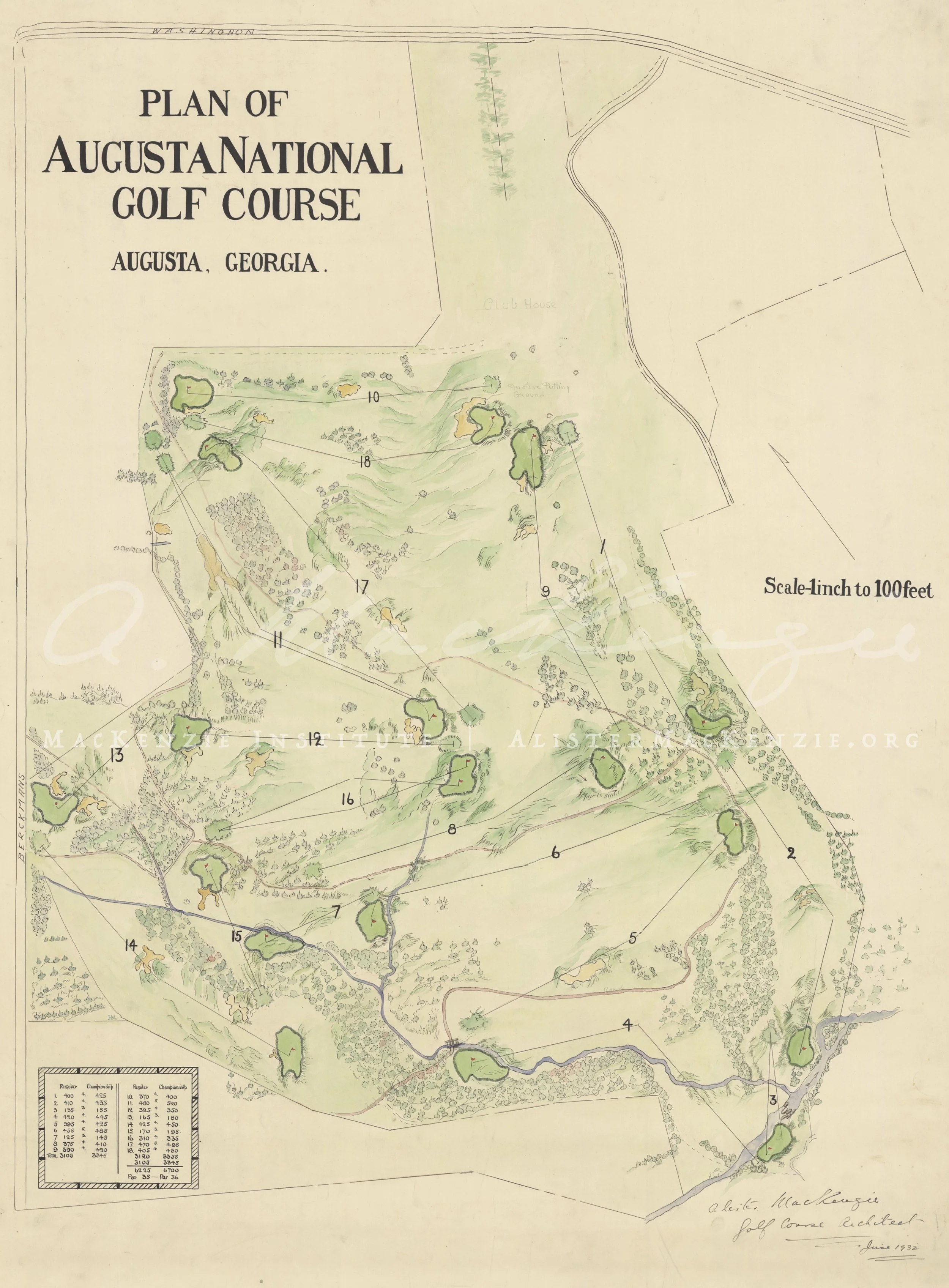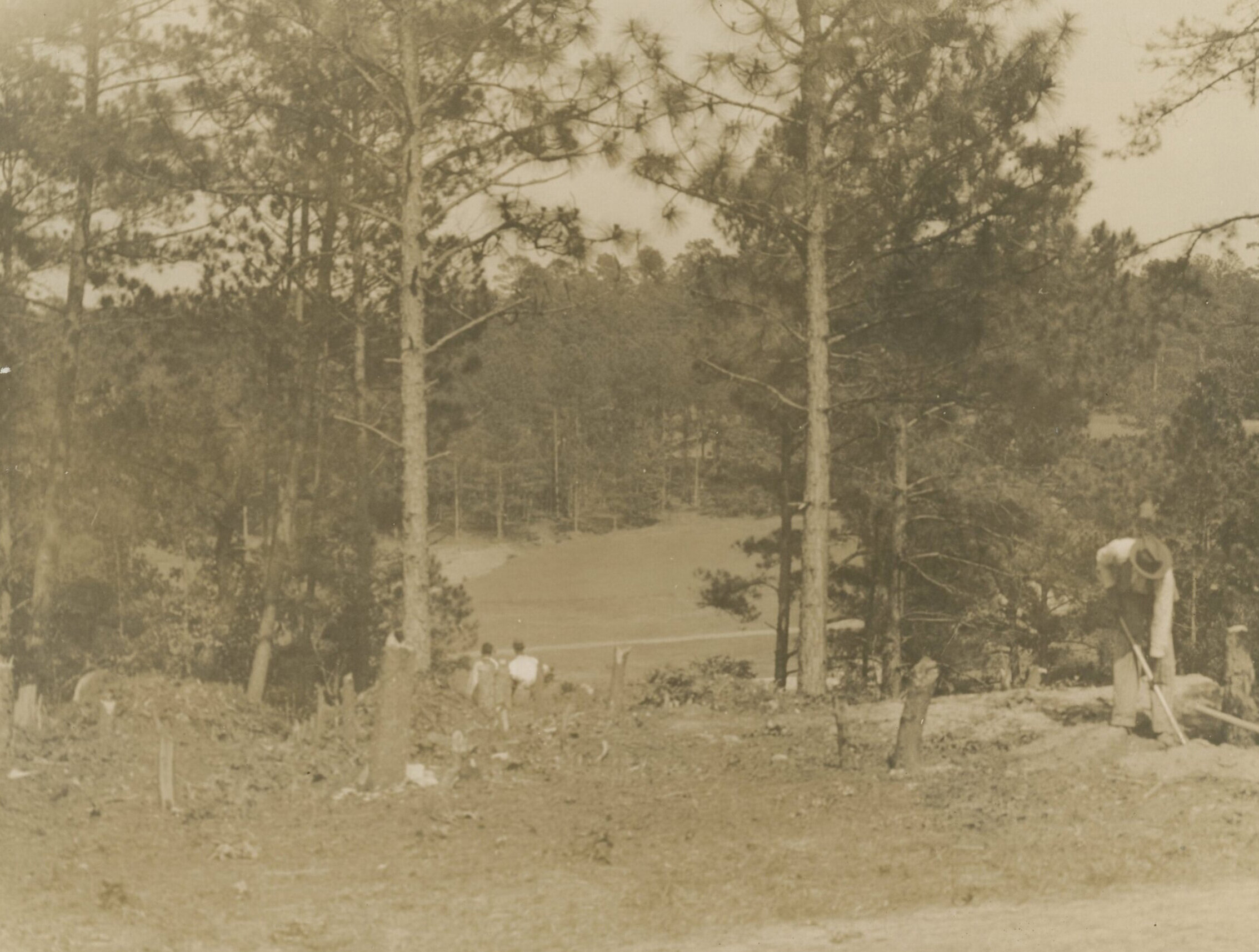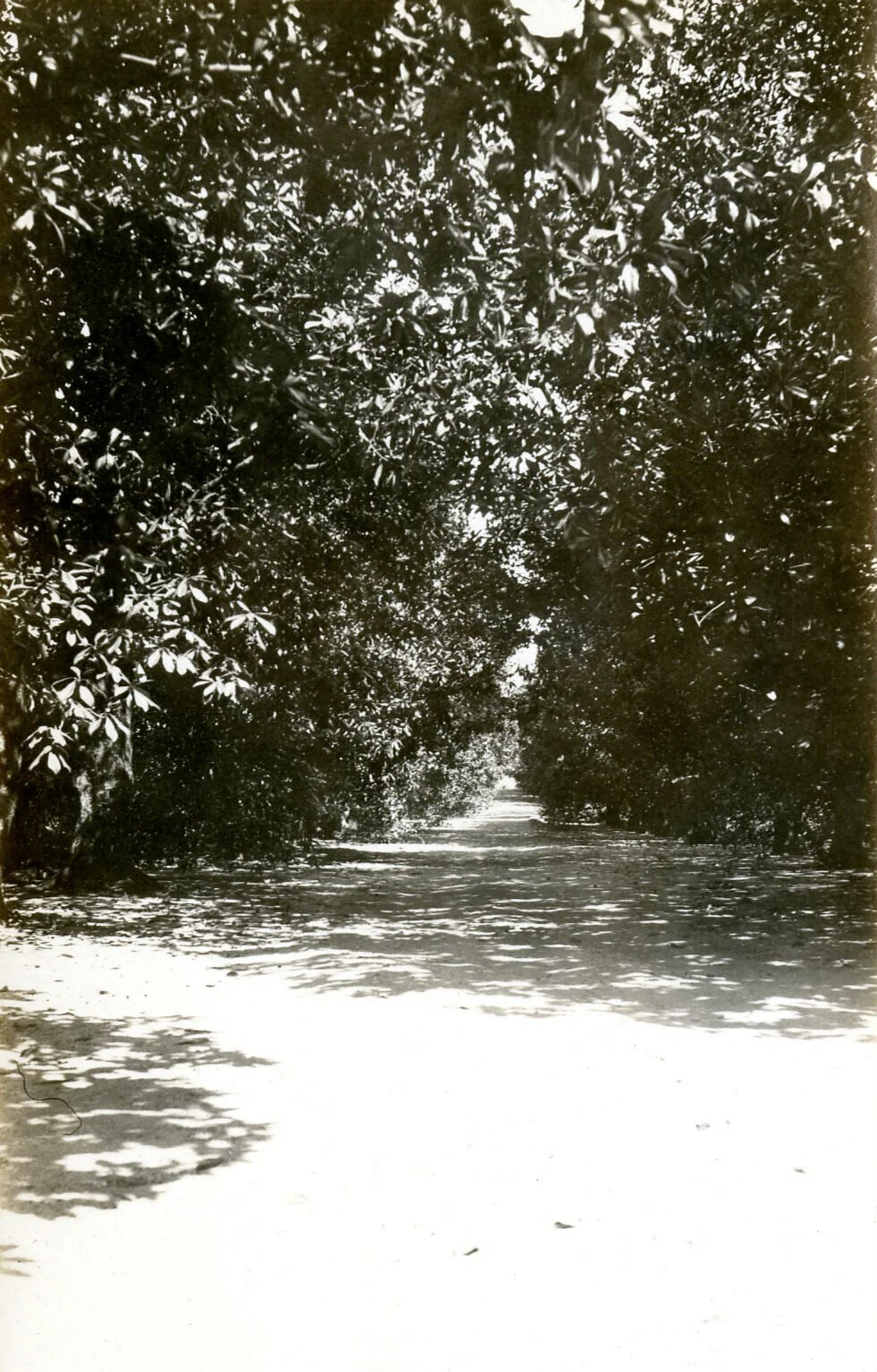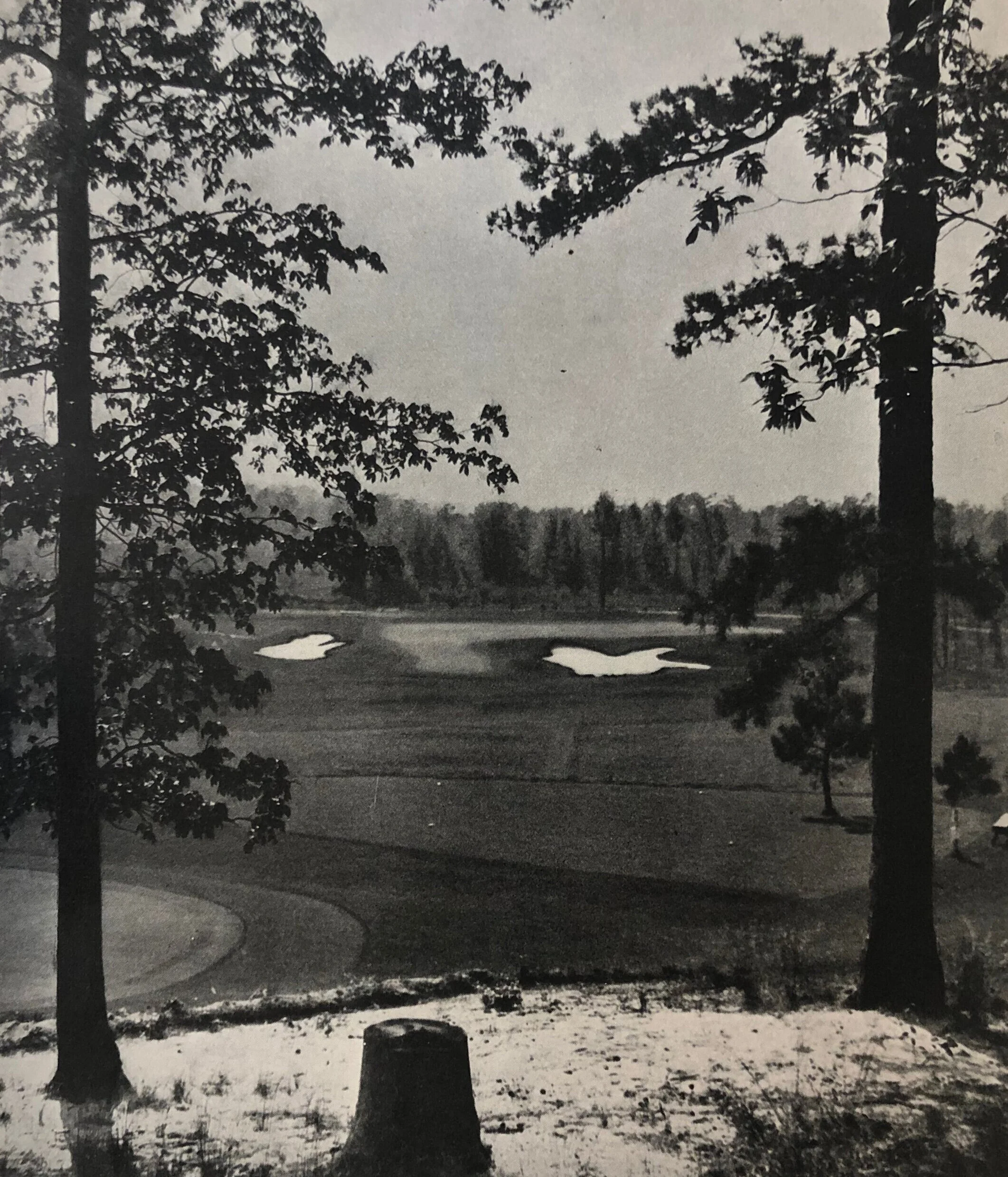PLANS FOR THE IDEAL GOLF COURSE
The Architect of the Augusta National Writes of Its Promise
By DR. ALISTER MACKENZIE
THE AMERICAN GOLFER — NEW YORK
MARCH 1932
:::
IN SETTING about the task of creating the Augusta National Golf Club course, Mr. Robert T. Jones, Jr. and I have shot at the mark of trying to create the ideal inland course. To accomplish such an aim, one must obviously be equipped with a thorough knowledge of the art of golf course design and be supplied with material with which there is at least a reasonable possibility of attaining that lofty goal.
To dismiss further reference to my own qualifications with the statement that, over a period of more than twenty years, I have built golf course practically all over the world, some of which I think the reader would recognize as having attained distinction, if it were possible to list all of them here, I want first to say that Mr. Jones, or “Bob” as his intimates call him — and I shall take the liberty of doing the same — has rendered me assistance of incalculable value. As president of the club, he is not only active in the administration of the enterprise, but has taken a most active hand in all matters pertaining to the design and construction of the course.
Certain holes of the Augusta National course have been cut through pine forests. Here Bob Jones and Wendell P. Miller, in charge of the construction, are on the ground going over application of the plans in detail.
Bob is not only a student of golf, but of golf courses as well, and, while I had known him for years, I was amazed at his knowledge and clear recollection of almost all of the famous golf holes in England and Scotland as well as here in America. He has the faculty of retaining a gull conception of any golf hole of special interest that has come under his observation, and I was a bit surprised at the keenness with which he is able to analyze and point out both the strength and the weakness of many, many holes which have impressed him. I am convinced that from no one else could I have obtained such help as he has given me in this undertaking. If, as I firmly believe, the course does become the world’s wonder inland course, it will be due enlarge part to the original ideas contributed by Bob.
Seeking to create the “ideal” course, the question naturally arises as to just what the “ideal” course should be. Bob and I found ourselves in complete accord on what we conceive to be the essentials of such a course:
1. A really great course must be a constant source of pleasure to the greatest possible number of players.
2. It must require strategy in the playing as well as skill, otherwise it can not continue to hold the golfer’s interest.
3. It must give the average player a fair chance, and at the same time, it must require the utmost from the expert who tries for sub-par scores.
4. All natural beauty should be preserved, natural hazards should be utilized, and artificiality should be minimized.
I want to next say quite frankly, that, if our finished work is favorably received, it will in part be due to the excellent material at our disposal. We had plenty of land, towering pine forests, a large variety of other trees, beautiful shrubbery, streams of water, a mildly rolling terrain of great variety, a rich soil for growing good fairway grass and a naturally beautiful setting from an architectural standpoint.
The Property was originally settled by a Belgian Baron by the name of Berckmans. He was an ardent horticulturalist and in this property he indulged his hobby to the limit of his resources. I don’t suppose the old Baron suspected that golf would some day become a popular sport in America and his property used by the world’s greatest player for a golf course. But if Bob’s great grandfather had foretold to the Baron what was to occur, the Baron could not possibly, in my opinion, have devised a beautification program that would today better serve our purposes.
There are azaleas and camellias in abundance and a great variety of small plants, shrubbery and hedges, and a real cork tree. There are also scores of japonica bushes, that are now really trees — in size. But the most impressive of all is the one-hundred-year-old double row of Magnolia Trees (said to be the finest in the South) that will border the driveway entrance into this “Golfers’ Paradise”.
Now to get back to the golf course. Doubt may be expressed as to the possibility of making a course pleasurable to everyone, but it may be pointed out that the “Old Course” at St. Andrews, Scotland, which Bob likes best of all, very nearly approaches this ideal.
It has been suggested that it is our intention at Augusta to produce copies of the most famous golf holes. Any attempt of this kind could only result in failure. It may be possible to reproduce a famous picture, but the charm of a golf hole may be dependent on a background of sand dunes, trees, or even mountains several miles away. A copy without the proper surroundings might create an unnatural appearance and cause a feeling of irritation, instead of charm. On the other hand, it is well to have a mental picture of the World’s outstanding holes and to use this knowledge in reproducing their finest golfing features, and perhaps even improving on them.
At Augusta we are striving to produce eighteen ideal holes, not copies of classical holes, but embodying their best features, with other features suggested by the nature of the terrain. We hope for accomplishments of such unique character that the holes will be looked upon as classics in themselves.
Alfred S. Bourne, left, and his brother George Bourne, right, are two of the well-known charter members of the new organization.
Dr. MacKenzie and Bob Jones during one of the preliminary examinations of the property.
The acid test of a golf course is its abiding popularity. And here we are up against a real difficulty. Does the average golfer know what he really likes himself? When he plays well he praises the course, but, if his score is a high one, the vigor of his language would put to shame a Regimental Sergeant Major. It is usually the best holes that are condemned most vehemently by those who fail to solve their strategy. Bob Jones realizes this so strongly that when asked his opinion about the design of Augusta National, he said that the course would differ so markedly from others, that many of the members at first would have unpleasant things to say about the architects. A few years ago I would have agreed with Bob, but today, owing to his own teaching, the work and writings of C. B. MacDonald, Max Behr, Robert Hunter, and others, Americans appreciate real strategic golf to a greater extent than even in Scotland, the Home of Golf.
I do not believe the Augusta National will impress anyone as a long course. Although undulating, it is not hilly. There will be no irritating walks from greens to tees, and, moreover, it will be so interesting and free from the annoyance of searching for lost balls, that players will get the impression that it is shorter than it really is.
While I am aware that it is difficult to make a word picture of a golf hole that will convey a clear impression of its appearance, I am including here brief notes including in some cases mention of famous holes elsewhere to which resemblance is had.
Hole No. 1 “Tea Olive” — Regular Distance 445 Yards — Championship 470 YardsA drive that is long and straight, skirting a group of trees on the right will be in a favorable position for the second. It will be difficult to obtain par figures from any other position.
Hole No. 2 “Pink Dogwood” — Regular Distance 480 Yards — Championship 510 Yards
This is an interesting three shot hole down hill. Each shot will have to be placed with great accuracy if par figures are obtained. On the other hand, it is quite possible for a powerful and accurate player to reach the green in two shots.
Hole No. 3 “Flowering Peach" — Regular Distance 335 Yards — Championship 360 Yards
This green is situated on an interesting natural plateau. The left hand side of the green is very narrow; whereas the right side is broad. It is easy for anyone to reach the wide portion of the green with their second shot but difficult to reach the narrow end where the pin will usually be placed.
Hole No. 4 “Flowering Crab Apple” — Regular Distance 160 Yards — Championship 170 Yards
This is a very similar hole to the famous Eleventh (Eden) at St. Andrews. There have been scores of attempted copies of this famous hole but there is none that has the charm and thrill of the original. Most copies are failures because of the absence of the subtle and severe slopes which create the excitement of the original, and also because the turf is usually so soft that any kind of a sloppy pitch will stop. Previous failures, followed by, comparatively speaking, increasing success may have given us sufficient experience to warrant us in hoping that here at last we may have constructed a hole that will compare favorably with the original.
Hole No. 5 “Magnolia” — Regular Distance 445 Yards — Championship 470 Yards
This will be a similar type of hole to the famous Seventeenth, the Road Hole at St. Andrews. A group of tress forms a corner of the dog-leg instead of the station master’s garden and the green itself will be situated on a similar plateau to its prototype.
Hole No. 6 “Juniper” — Regular Distance 180 Yards — Championship 200 Yards
This is similar to the Redan Hole at North Berwick (Scotland), but here, owing to its extreme visibility, lay of the land, and beauty of the surroundings, we have no doubt that we will be able to construct a much more attractive hole than the original Redan.
Hole No. 7 “Pampas” — Regular Distance 315 Yards — Championship 340 Yards
This hole is similar in character to the Eighteenth Hole at St. Andrews, Scotland. There is a deep hollow at the front of the green which is necessary to attack at the correct angle for par figures to be obtained. At this hole, it will also be desirable to play a run-up shot, as it will be exceedingly difficult to retain a pitch in the usual position of the flag.
Hole No. 8 “Yellow Jasmine” — Regular Distance 470 Yards — Championship 490 Yards
A three-shot hole up hill. The green is in a punch bowl surrounded by large hillocks nine to twelve feet high. It is completely visible for the third shot and a player who is sufficiently long to get up in two, will be able to define the position of the green owing to the size of the surrounding hillock. It may be compared to the Seventeenth Green at Muirfield (Scotland).
Hole No. 9 “Carolina Cherry” — Regular Distance 405 Yards — Championship 430 Yards
This is a hole of the Cape type played slightly down hill. A long straight drive to the right will give an easy second to the green.
Hole No. 10 “Camellia” — Regular Distance 395 Yards — Championship 420 Yards
This is a comparatively easy hole down hill. A long drive over hillocks on the right will land on a plateau from which an iron shot can be played to the opening of a large nature-made punch bowl green. The driver that pulls his shot to the left of the fairway is called upon to play a difficult second shot over a large spectacular bunker, with small chance of getting near the pin. This hole embodies the most attractive features of the 13th hole at Cypress Point, California, and the 4th at Alwoodley, one of the best of the British inland links.
Hole No. 11 “White Dogwood” — Regular Distance 405 Yards — Championship 430 Yards
The green is situated in the bend of a stream. The approach has a marked tilt upwards from left to right, so that the further and more accurately a drive is placed to the left the easier the second shot becomes. This should always be a most fascinating hole. I don’t know another quite like it.
Hole No. 12 “Golden Bell” — Regular Distance 120 Yards — Championship 130 Yards
This is an interesting pitch shot to a long narrow green immediately over a stream. The bold player will go for the pin on the right, while the less ambitious will steer for the larger landing space on the left side of the green. There is a steep sandy bank covered with beautiful tress beyond the green.
Hole No. 13 “Azalea” — Regular Distance 420 Yards — Championship 440 Yards
This is played along the course of a brook with the final shot finishing to a green over the stream with a background of a hill slope covered with magnificent pine trees. The hole has some of the best golfing features of the Seventeenth Hole at Cypress Point, California, and the ideal hole depicted in C. B. Macdonald’s book.
Hole No. 14 “Chinese Fir” — Regular Distance 395 Yards — Championship 425 Yards
This hole embodies some of the features of the Sixth Hole at St. Andrews, Scotland. A long drive skirting or played over a bunker on the right will give a visible shot to the green. From the left the green is semi-blind and moreover a run up approach will be required over a succession of hillocks and hollows.
Hole No. 15 “Firethorn” — Regular Distance 460 Yards — Championship 485 Yards
This is a three-shot hole to most golfers. A stream has been diverted so as to form a similar loop to the first hole of St. Andrews. It is not only an interesting three-shot hole, as one will be maneuvering for position from the tee shot onwards, but also a magnificent two-shot hole, as a skillful and courageous player, aided by a large hillock to the right of the loop of the stream, will be able to pull his second shot around to the green.
Hole No. 16 “Redbud” — Regular Distance 140 Yards — Championship 150 Yards
This hole, over a stream, is somewhat similar to the best hole (seventh) at Stoke Poges, England. It will probably be a better hole than the one at Stoke Poges as the green will be more visible and the background more attractive.
Hole No. 17 “Nandina” — Regular Distance 375 Yards — Championship 410 Yards
The construction of this green is somewhat similar to the famous Fourteenth at St. Andrews (reversed). It will be necessary to attack the green from the right and it will be essential to play a run-up shot if par figures are desired. We hope to make the turf of such character that an indifferent pitch will not stop on the green. Until players have learned to play the desired shot this will undoubtedly be one of the most fiercely criticised holes.
Hole No. 18 “Holly” — Regular Distance 390 Yards — Championship 410 Yards.
The tee shot is played over a valley and bank running diagonally from left to right. The longer the drive to the right the easier the second shot. The approach to the green is bunkered heavily on the left.
Nineteenth Hole — 90 Yards
Clifford Roberts, Grantland Rice and some of the other governors thought it might be interesting to have a real nineteenth hole, so that the loser could have the opportunity of getting his money back by playing double or quits.
Nineteenth Hole — This nineteenth hole will be an attractive plateau green, narrow at one end, where the flag will usually be placed, but wide at the other end so as to give a safety route to the player who has not the courage or skill to pitch to the narrow end of the green. In this respect the hole will be somewhat similar to the short hole going out at Lakeside, near Los Angeles.
I know of only two golf course with an actual nineteenth hole. One is Knollwood (New York) and the other the Tam-O-Shanter Club (Detroit).
To sum up, I will detail some of the features:
Yardage — The length of the Course from the Regular Markers will be approximately 6,300 yards and from the Championship Markers, 6,700 yards. Both sets of markers will be on the same tees. Par for the Course is 72.
Fairways — The fairways are to be so arranged that every type of player can choose a route from the tees to the fairways, that he should be able to negotiate successfully. The expert, who tries for sub-par scores, will find himself confronted with sporting problems that will require the maximum in strategy as well as skill. In order to ensure exceptionally good turf, equipment for watering the fairways is to be provided.
Greens — The greens will have grass putting surfaces. The majority will be mildly rolling, while a few will be decidedly so. All of the greens will be of generous proportions, the average width being about thirty-two yards and the average depth thirty yards.
Sand Traps — There will be relatively few sand traps, the trees, streams and mildly rolling fairway surfaces supplying natural hazards. There are to be several greens, of unusual design, without a single guarding trap.
Bunker-less punch bowl green surrounded by artificially constructed hillocks on the three-shot eighth hole.
“The Augusta National represented my best opportunity, and I believe, my finest achievement.” - Dr. Alister MacKenzie
Bobby Jones, Wendell Miller & company surveying the property after tree clearing.
View looking south from clubhouse site.
View from north of old Berckmans house.
View from entrance of Magnolia Lane.
This view, taken from back of the tee, shows the fourth hole on the course at the Augusta National Links at Augusta, Georgia. The hole is a one-shotter, measuring one hundred ninety yards. The club has announced an invitation open tournament for March 15, 16 and 17. Bobby Jones expects to throw his hat in the ring again at that time following an absence of three years.

